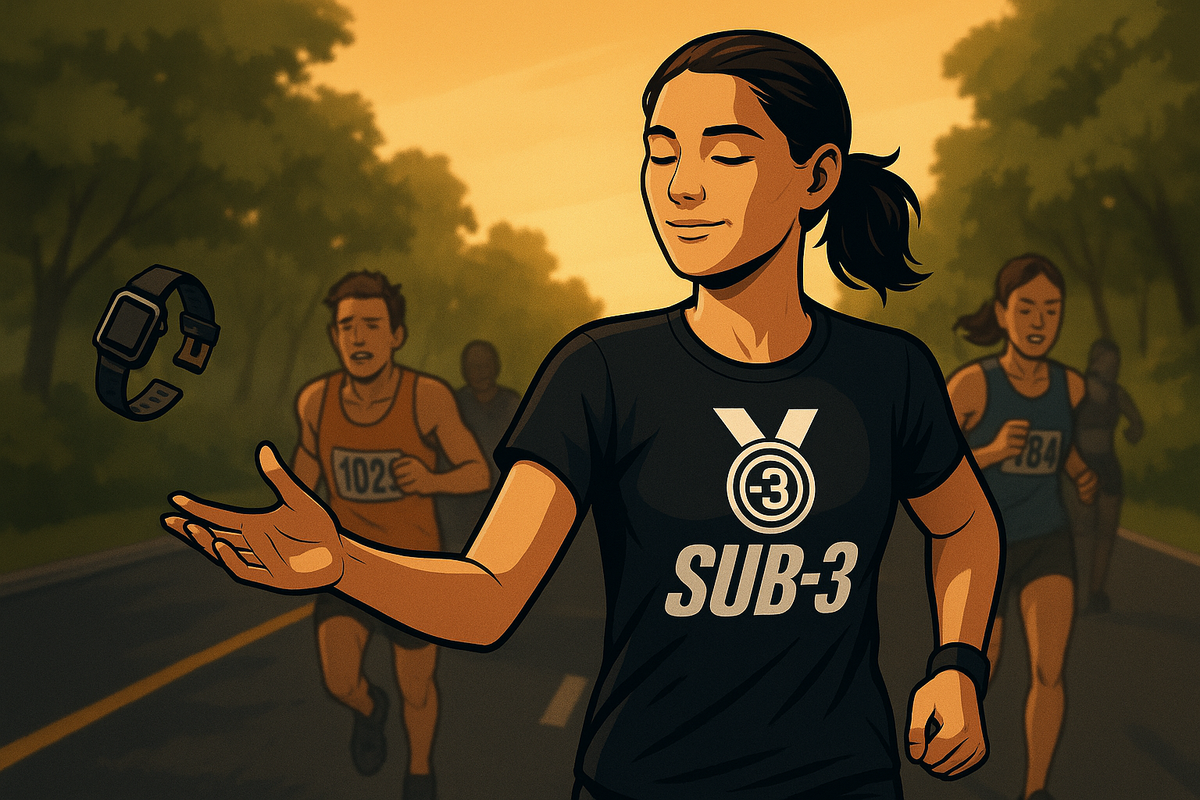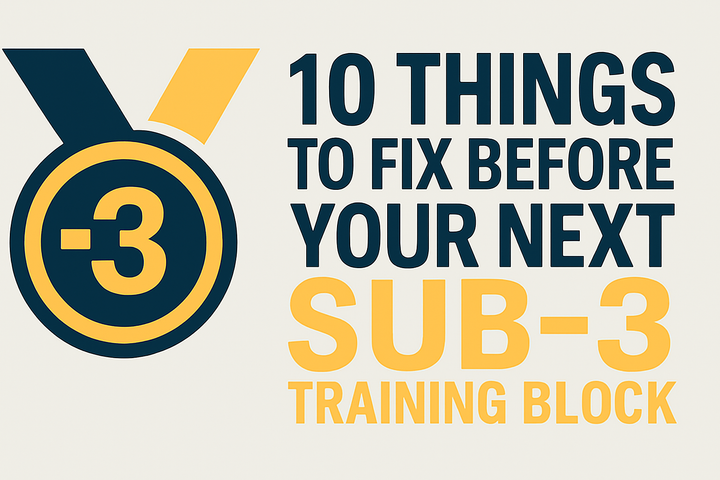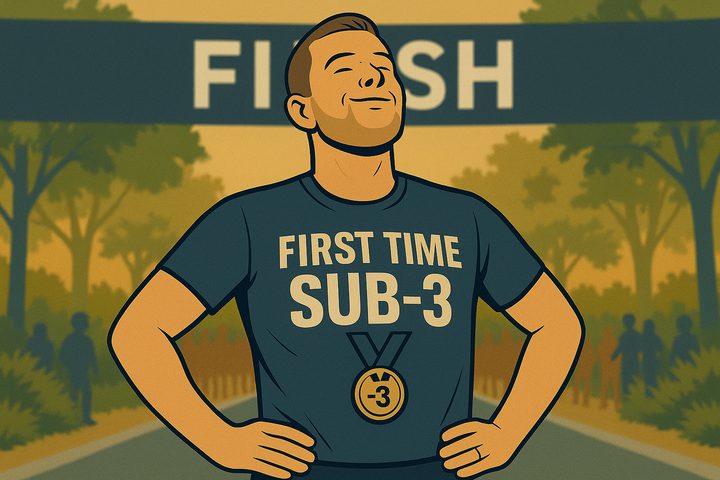In praise of perceived effort for the sub‑3 runner
What happens when you stop chasing your watch - and start listening to your body

Like many runners, I used to get hung up on pace. In my early days I ran almost everything in a single gear, eventually trying to push the pace on every outing - an approach that quickly became unsustainable. I dabbled with heart rate and power too, but both varied wildly depending on external factors. It wasn’t until I received professional coaching that the idea of “perceived effort” really clicked - and even then, it took time to embrace.
Perceived effort is the deceptively simple act of assessing how hard a run feels. Not what your watch tells you. There’s a tendency among runners - especially aspiring sub‑3s - to get lost in the metrics and to lose touch with what their own body is saying. But learning to gauge your own effort can be a revelation.
It certainly was for me. I ran two half marathons this past season and perceived effort helped me in both - albeit in very different ways.
The first was in Battersea Park, where I ran entirely to perceived effort, using my watch only to track distance. It felt strange at first. I assumed I was running much slower than usual - but I later discovered I’d run the first 10K in 36 minutes, and it hadn’t even felt that hard. I went on to run a two-minute PB. Had I been hawkishly checking my pace, I might have panicked or backed off. Trusting how I felt made all the difference.
The second was at the St Albans Half. I’d had back pain in the days before and my body felt out of sync. From the start, my perceived effort was high - alarmingly so, given the moderate pace I was running at. It was as if the warning lights on the dashboard had begun flashing the moment I pulled onto the motorway. So I did something I’ve never done before: I pulled over. I stepped off the course and recorded my first-ever DNF, prioritising recovery over bravado. Without tuning into perceived effort, I might have pushed through - and paid for it.
Understanding The Zones
Perceived effort is typically broken into five intuitive zones, loosely aligned with the Rate of Perceived Exertion (RPE) scale. These aren’t strict categories - but they help build internal pacing awareness.
| Zone | Description | Approx RPE (0–10) |
|---|---|---|
| 1 | Could run like this forever | 1–2 |
| 2 | Conversational, sustainable | 3–4 |
| 3 | Tempo effort - solid but stable | 5–6 |
| 4 | 10K or interval pace - hard work | 7–8 |
| 5 | Redline - all-out sprint effort | 9–10 |
Think of these as gears. Over time, your body will learn what each one feels like. That awareness can become one of your strongest tools.
The Case For Listening
The appeal of perceived effort is its honesty. It reflects your entire physiological state in real time - your sleep, your mood, your temperature regulation, your terrain, your accumulated fatigue. This is why researchers like Samuele Marcora have argued that perceived exertion is a more accurate predictor of endurance performance than VO2 max or heart rate. Matt Fitzgerald calls it “the master controller.”
Perceived effort also builds psychological control. In a race scenario - especially over the marathon distance - your ability to modulate effort intuitively can be the difference between blowing up and breaking through. And many of the world’s top distance runners, especially in East Africa, train primarily by feel, without the constant feedback loop of GPS or heart rate monitors.
For the sub‑3 runner, who’s chasing fine margins, this matters. There’s a danger in becoming too bound to pace or power targets. The body isn’t a machine. Some days your easy pace is genuinely slower. Other days you’re capable of more than your watch thinks. Perceived effort allows for adaptation without abandonment. It’s structure - but with built-in flexibility.
I still wear a GPS watch. I value the data. But I’ve stopped looking at it during runs. The review comes after. In the moment, I trust my body. That simple shift - from watching the watch to listening to the legs - has made me a stronger, smarter runner.
So try it. Leave the pace screen behind. Tune in. You might just run your best race.
5 Things Sub‑3 Runners Can Learn From Perceived Effort
- Train your internal zones
Get used to recognising tempo, threshold and marathon pace by feel. Then trust it on race day. - Let go of real-time data
Use the watch to record, not to guide. You’ll still get the data afterwards - but in the moment, listen to your legs. - Adapt to the day
Some sessions or races will feel harder than expected. Adjust your goals to suit, rather than crashing and burning. - Build your racing intuition
Perceived effort is a skill that gets sharper with use. Practise it on long runs and hard workouts to develop better race-day instincts. - Learn when to stop
No watch can tell you when to quit - but your body can. Train to hear that message before it turns into injury or burnout.
Enjoyed this article? Help keep Sub-3 running — support us with a coffee.
To help fund the running of the site, Sub-3 is an Amazon Associate and earns from qualifying purchases. We only recommend gear or kit that has genuinely helped in our own running and that we believe is worth considering.



